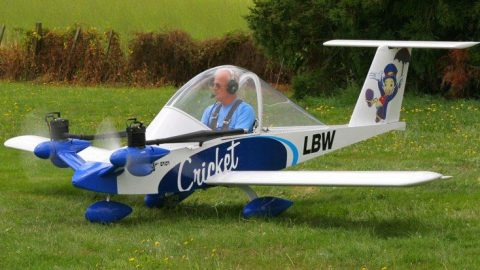
Airliners.net
There are some massive planes that soar the skies like the C-5 Galaxy or as big as the Antonov An-225, but size isn’t everything. Technology can advance move forward by becoming smaller such is the case for Columban Cri-Cri.
At only 13 feet long, the Cri-Cri (AKA the Cricket) is the world’s smallest twin-engine plane. Designed in 1973 by aeronautical engineer Michel Columban as a way to see how small a plane could be while providing comfort and good performance to the pilot. The Cri-Cri’s small size and aluminum frame allow it to reach speeds of 137 MPH and climb at a rate of 1,300 feet per minute.

General Characteristics
- Crew: one
- Length: 3.9 m (12 ft 10 in)
- Wingspan: 4.9 m (16 ft 1 in)
- Wing area: 3.1 m2 (33 sq ft)
- Airfoil: Wortmann 21.7
- Empty weight: 78 kg (172 lb)
- Max takeoff weight: 170 kg (375 lb)
- Powerplant: 2 × JPX PUL 212 single-cylinder piston engines, 11 kW (15 hp) each
- Propellers: 2-bladed
Performance
- Maximum speed: 220 km/h (137 mph; 119 kn)
- Cruise speed: 185 km/h; 115 mph (100 kn)
- Range: 463 km; 288 mi (250 nmi)
- Service ceiling: 3,700 m (12,139 ft)
- Rate of climb: 6.6 m/s (1,300 ft/min)
- Wing loading: 55 kg/m2 (11 lb/sq ft)
The tiny plane with the bubble canopy looks like something out of the space age but pilots claim that it handles surprisingly well despite its small size. See the Cricket strut its stuff in this clip from the Historical Aviation Film Unit.